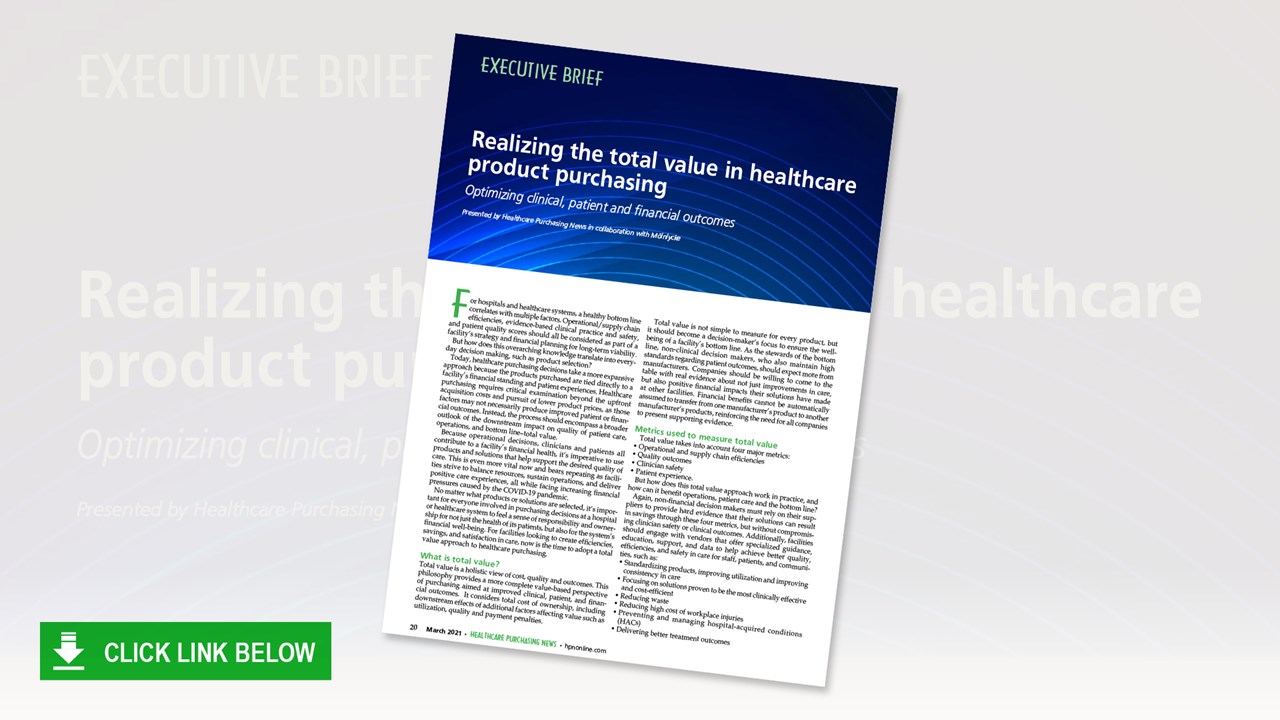Realizing the total value in healthcare product purchasing
Optimizing clinical, patient, and financial outcomes

For hospitals and healthcare systems, a healthy bottom line correlates with multiple factors. Operational/supply chain efficiencies, evidence-based clinical practice and safety, and patient quality scores should all be considered as part of a facility’s strategy and financial planning for long-term viability. But how does this overarching knowledge translate into everyday decision-making, such as product selection?
Today, healthcare purchasing decisions take a more expansive approach because the products purchased are tied directly to a facility’s financial standing and patient experiences. Healthcare purchasing requires critical examination beyond the upfront acquisition costs and pursuit of lower product prices, as those factors may not necessarily produce improved patient or financial outcomes. Instead, the process should encompass a broader outlook of the downstream impact on quality of patient care, operations, and bottom line–total value.
Because operational decisions, clinicians and patients all contribute to a facility’s financial health, it’s imperative to use products and solutions that help support the desired quality of care. This is even more vital now and bears repeating as facilities strive to balance resources, sustain operations, and deliver positive care experiences, all while facing increasing financial pressures caused by the COVID-19 pandemic.
No matter what products or solutions are selected, it’s important for everyone involved in purchasing decisions at a hospital or healthcare system to feel a sense of responsibility and ownership for not just the health of its patients, but also for the system’s financial well-being. For facilities looking to create efficiencies, savings, and satisfaction in care, now is the time to adopt a total value approach to healthcare purchasing.
What is total value?
Total value is a holistic view of cost, quality and outcomes. This philosophy provides a more complete value-based perspective of purchasing aimed at improved clinical, patient, and financial outcomes. It considers total cost of ownership, including downstream effects of additional factors affecting value such as utilization, quality and payment penalties.
Total value is not simple to measure for every product, but it should become a decision-maker’s focus to ensure the wellbeing of a facility’s bottom line. As the stewards of the bottom line, non-clinical decision makers, who also maintain high standards regarding patient outcomes, should expect more from manufacturers. Companies should be willing to come to the table with real evidence about not just improvements in care, but also positive financial impacts their solutions have made at other facilities. Financial benefits cannot be automatically assumed to transfer from one manufacturer’s product to another manufacturer’s products, reinforcing the need for all companies to present supporting evidence.
Metrics used to measure total value
Total value takes into account four major metrics:
• Operational and supply chain efficiencies
• Quality outcomes
• Clinician safety
• Patient experience.
But how does this total value approach work in practice, and how can it benefit operations, patient care and the bottom line?
Read the full Executive Brief here:





